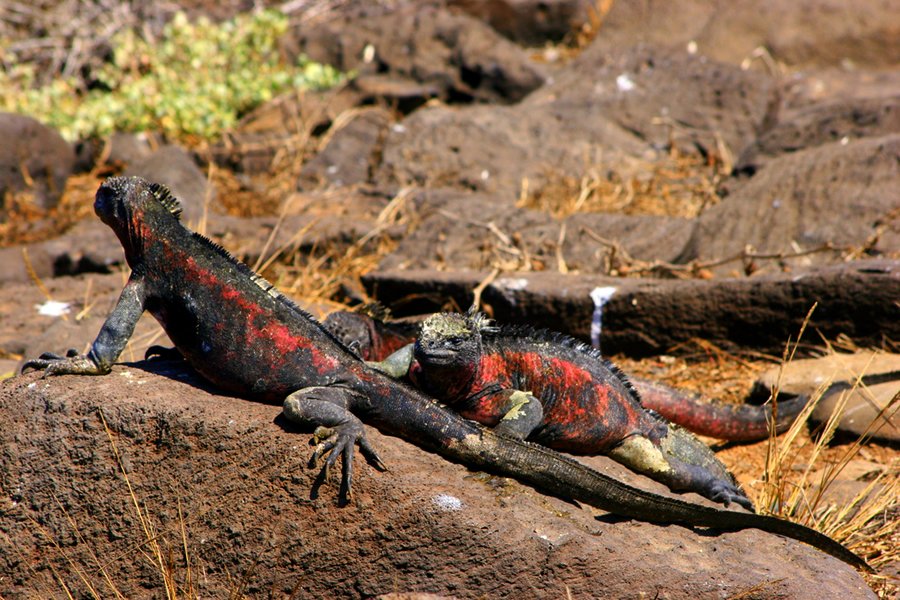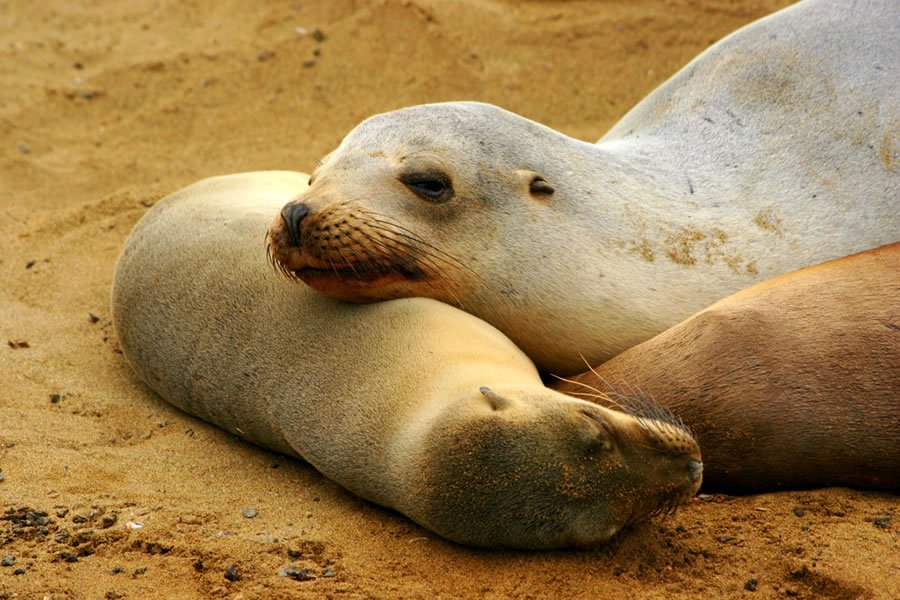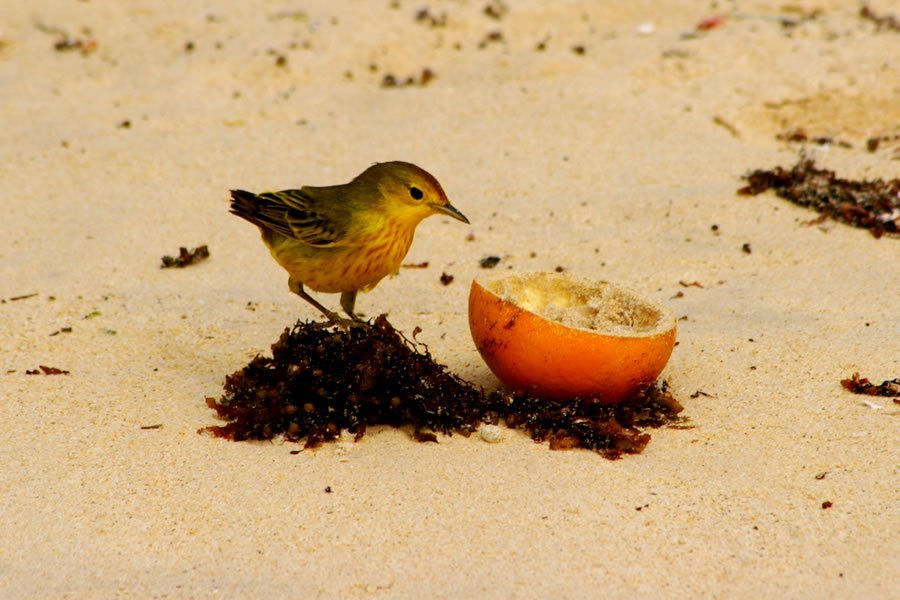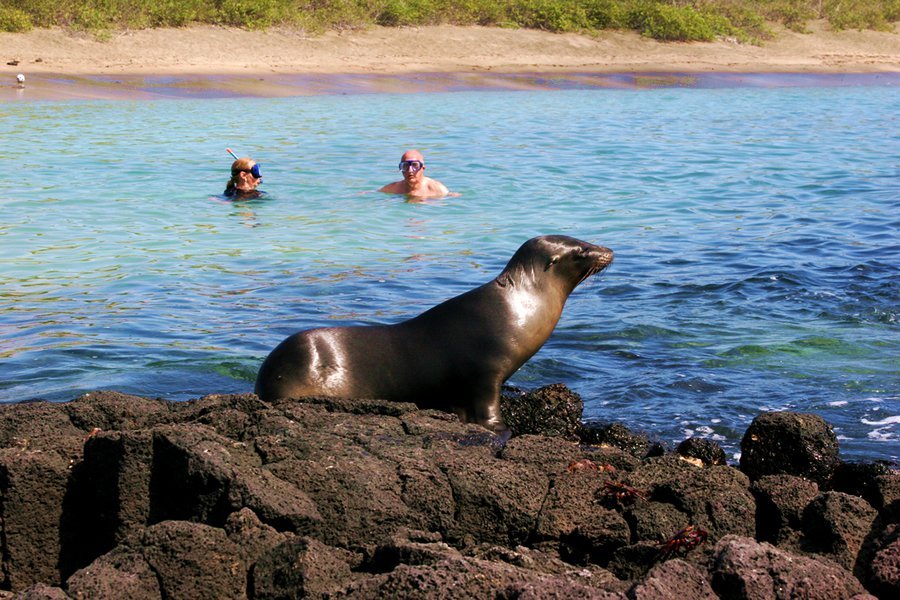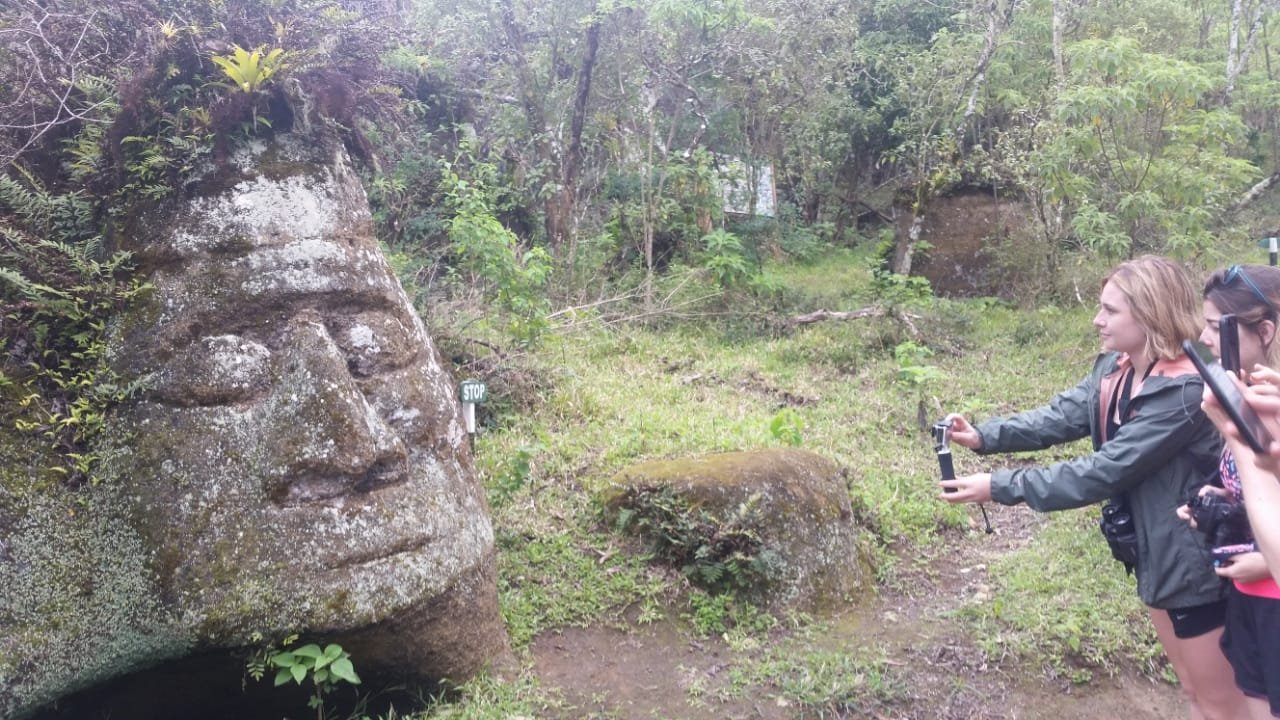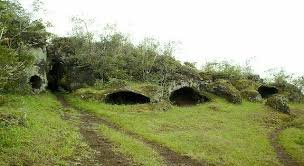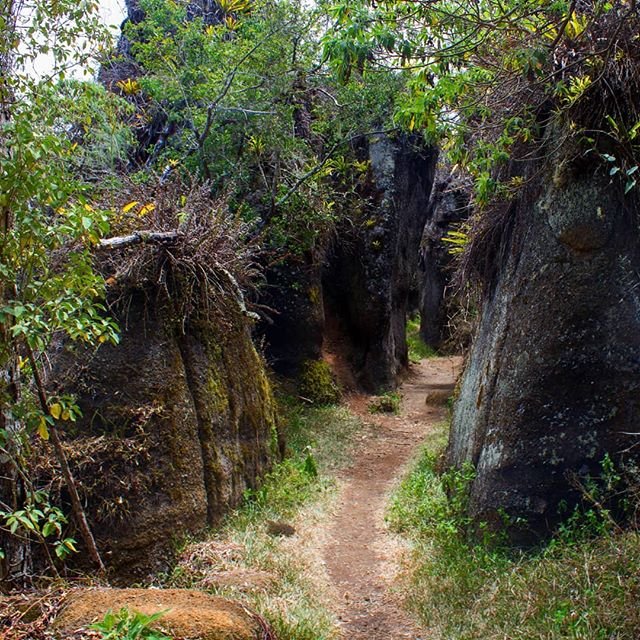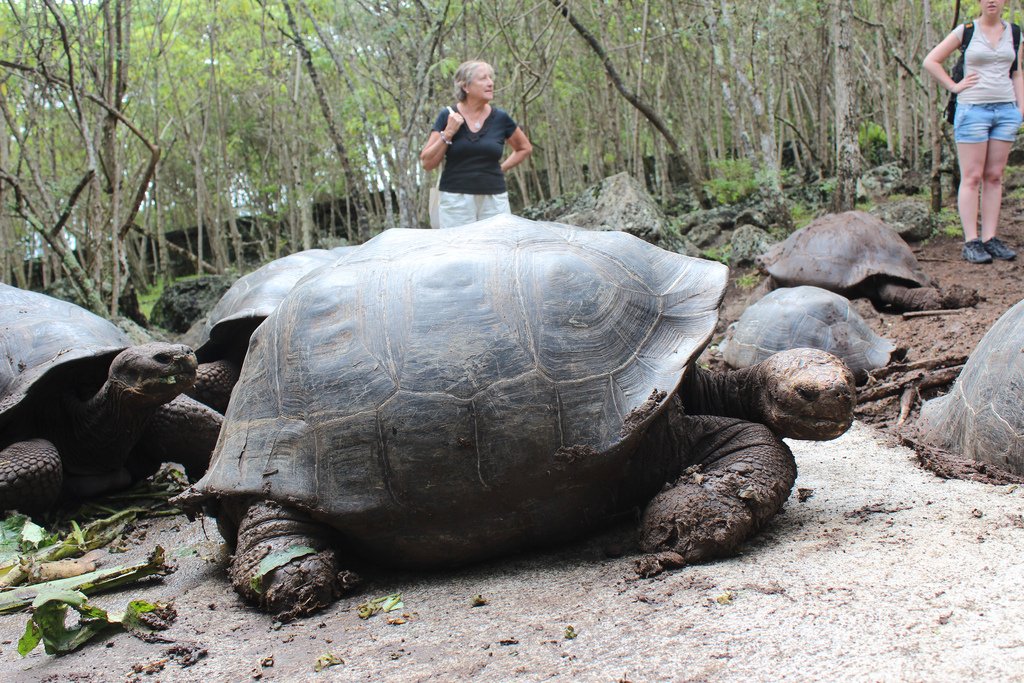Tour Floreana
Floreana Island Day Tour
From: 8:00 Am. To: 5:00 Pm.
Tour Itinerary:
AM: Transfer to Puerto Velasco Ibarra, near Black beach, then we get on board our typical open Truck or CHIVA and head for the highlands. Travelling we will pass by the great Cerro Pajas volcanic Hill & the Scalesia Forest, look forthe the unique to this island medium tree finch., we will arrive to Asilo de la Paz visitor site, and then we will hike for 15 minutes to get to the area of the reintroduction of Giant Tortoises on Florena Island, we continue hiking to the fresh water source the reason for the first human setlement in this Island also we will discover the nearby caves that were used by the early settlers and Pirates.
PM: Lunch in a local restaurant, after lunch we will stay in the beach and have great swimming an snorkeling with sea lions and green sea turtles and variety of Fish.
Wath to bring & To use:
Small backpack (waterproof), Comfortable walking shoes, Sneakers or rubber soles, Shorts Trousers, T-shirts, Long and Short sleeved shirts Windbreaker, Bathing suit, Wet suit (for snorkeling between June - November), Hat or cap, Toilette kit, Sun block, Sunglasses, Binoculars, Camera & camcorder.
Includes:
Transportation, English speaking guide,Lunch,Snorkel equipment, Excursions, drinking water.
About the Island.
Floreana Island, It was named after Juan José Flores, the first president of Ecuador, during whose administration the government of Ecuador took possession of the archipelago. It was previously called Charles Island (after King Charles II of England), and Santa Maria after one of the caravels of Columbus.
The island has an area of 173 square kilometres (67 sq mi). It was formed by volcanic eruption. The island's highest point is Cerro Pajas at 640 metres (2,100 ft), which is also the highest point of the volcano like most of the smaller islands of Galápagos.
Since the 19th century, whalers kept a wooden barrel at Post Office Bay, so that mail could be picked up and delivered to their destination by ships on their way home, mainly to Europe and the United States. Cards and letters are still placed in the barrel without any postage. Visitors sift through the letters and cards in order to deliver them by hand.
Due to its relatively flat surface, supply of fresh water as well as plants and animals, Floreana was a favorite stop for whalers and other visitors to the Galápagos. When still known as Charles Island in 1819, the island was set alight as a prank by helmsman Thomas Chappel from the Nantucket whaling ship the Exess. Being the height of the dry season, the fire soon burned out of control. The next day saw the island still burning as the ship sailed for the offshore grounds and after a full day of sailing the fire was still visible on the horizon. Many years later Thomas Nickerson, who had been a cabin boy on the Essex, returned to Charles Island and found a black wasteland: "neither trees, shrubbery, nor grass have since appeared. It is believed the fire contributed to the extinction of some species originally on the island.
In September 1835 the second voyage of HMS Beagle brought Charles Darwin to Charles Island. The ship's crew was greeted by Mr.Nicholas Lawson, acting for the Governor of Galápagos, and at the prison colony Darwin was told that tortoises differed in the shape of the shells from island to island, but this was not obvious on the islands he visited and he did not bother collecting their shells. He industriously collected all the animals, plants, insects and reptiles, and speculated about finding "from future comparison to what district or 'centre of creation' the organized beings of this archipelago must be attached”.
In 1929, Friedrich Ritter and Dore Strauch arrived in Guayaquil from Berlin to settle on Floreana, and sent letters back that were widely reported in the press, encouraging others to follow. In 1932 Heinz and Margret Wittmer arrived with their son Harry, and shortly afterwards their son Rolf was born there, the first citizen of the island to have been born in the Galápagos. Later in 1932, the self-described “Baroness” von Wagner Bosquet” arrived with companions, but a series of strange disappearances and deaths (including possible murders) and the departure of Strauch left the Wittmers as the sole remaining inhabitants of the group who had settled there. They set up a hotel which is still managed by their descendants, and Mrs. Wittmer wrote an account of her experiences in her book Floreana: A Woman's Pilgrimage to the Galápagos. A documentary film recounting these events, The Galapagos Affair, was released in 2013.
The demands of these visitors, early settlers, and introduced species devastated much of the local wildlife with the endemic Floreana tortoise being declared extinct and the endemic Floreana mockingbird becoming extirpated on the island (the few remaining are found on the nearby islands of Gardiner and Champion).
When Charles Darwin visited the island in 1835, he found no sign of its native tortoise and assumed that whalers, pirates, and human settlers had wiped them out. Since about 1850, no tortoises have been found on the island (except for one or two introduced animals kept as pets by the locals), and the International Union for Conservation of Nature classified the Floreana tortoise (Chelonoidis elephantopus sometimes called Chelonoidis nigra) as extinct. However, it may be that there are pure Floreana tortoises living on other islands in the archipelago.
The Highlights:
A favorite dive and snorkeling site, “Devil's Crown”, located off the northeast point of the island, is an underwater volcanic cone, offering the opportunity to snorkel with schools of fish, sea turtles, sharks and sea lions, which are abundant amongst the many coral formations found here.
At Punta Cormorant, there is a green olivine beach to see sea lions and a short walk past a lagoon to see flamingos, rays, sea turtles, and Grapsus grapsus (Sally Lightfoot)crabs. Pink flamingos and green sea turtles nest from December to May on this island. The "joint footed" petrel is found here, a nocturnal sea bird which spends most of its life away from land.
Post Office Bay provides visitors the opportunity to send post cards home without a stamp via the over 200-year-old post barrel and other travelers.
A miniature football (soccer) field, complete with goals, at the end of Post Office Bay, is used by tour boat crews and their tourists.

Galapagos Islands Cruises
Galapagos Islands Tours
Galapagos Islands Diving
Galapagos Last minutes
Trips to Galapagos Islands
Galapagos Tours
Galapagos Cruises
Cruises to Galapagos
Tours to Galapagos
Travel to Galapagos
Travel to Ecuador
Travel to Peru
Travel to South América
Travel to Amazonas
Tourism Tour Galapagos Islands
Visiting Giant Turtles Giant Tortoises in Galapagos

